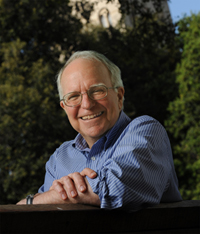

Research
BPEA | 1975 No. 2
1975, No. 2
IN THE MODERN American economy, fluctuations in unemployment usually
persist from one year to the next. Past decades have seen two lengthy
deviations from equilibrium in the labor market: 1958 through 1963, when
the market was slack for six straight years, and 1964 through 1970, when it
was tight for seven straight years. Virtually all forecasters agree today that
the sharp recession of 1974-75 will mark the beginning of another extended
period of slack, with the official unemployment rate above 6 percent perhaps
until the end of the decade. These forecasts are fully consistent with
the behavior of the economy after the only comparable postwar recession,
in 1957-58. Explanation of the persistence of unemployment has been a
major focus of macroeconomic theory since the Great Depression. Though
his predecessors had begun to think seriously about the challenge to classical
economic theory raised by successive years of high unemployment,
John Maynard Keynes was the great pioneer in creating a theory that came
to grips with the facts of persistent unemployment, and he remains the
dominant figure today.
This paper presents a detailed critique of modern explanations of the behavior
of unemployment, both within the Keynesian tradition and outside
it. The critique begins with a close look at the modern theory of disequilibrium,
which claims to provide a microeconomic foundation for the theory
of unemployment and wage adjustment. This theory attributes both the rigidity of wages and the persistence of unemployment to the slow diffusion
of information within the labor market. The evidence presented here, however,
suggests that unemployment in the modern American economy persists
far longer than is remotely plausible if this factor is the main cause of
the lag in market clearing. This hypothesisis strongly confirmed by a study
of the data under the assumption that three months is long enough for both
workers and employers to find out what is happening in the labor market.